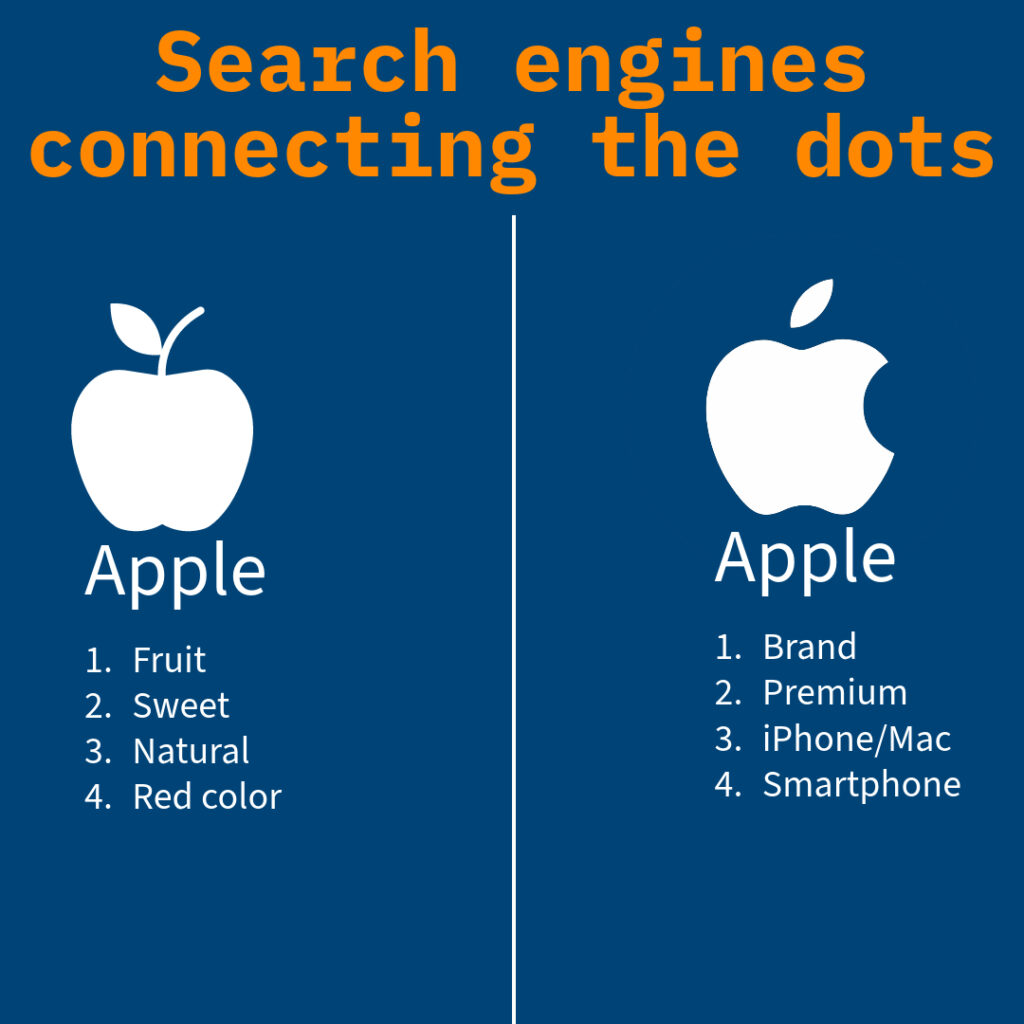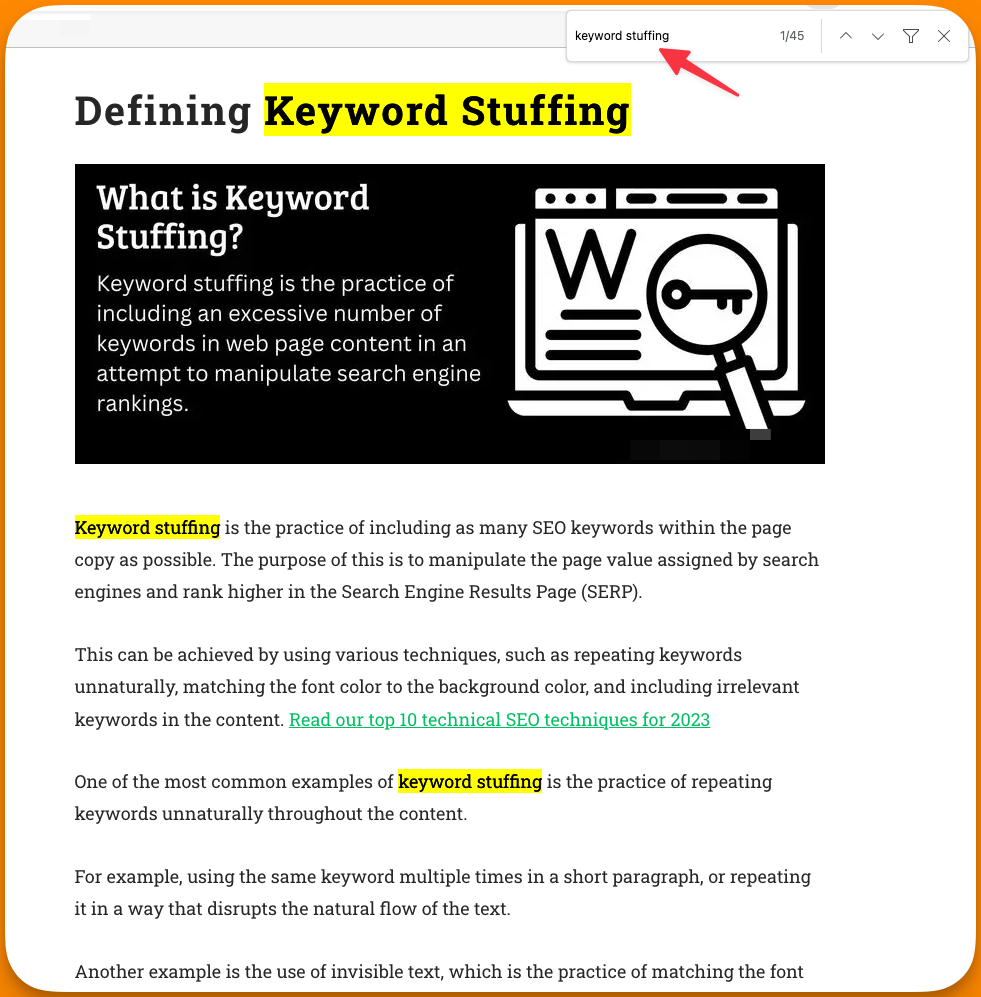What if I told you that conversions are directly related to the keywords you use in your copy? Would you stop taking it lightly? Also, targeting relevant keywords will fix inconsistent rankings.
By the end of this issue, you will be able to:
- Understand how search engines are connecting the dots
- Difference between primary & secondary keywords
- Role of primary keywords
You don’t know for sure, how much optimization is needed to rank at the top. What if you overuse, or underuse? Who knows? If you’re not doing it right, you’re hurting your site more than improving.
Stuffing keywords looks awkward, especially if you’re catering high-ticket audience. Even from a user-experience standpoint, you should avoid it at all costs.
Here are 3 things you should understand to avoid stuffing keywords & worrying about keyword density, unknowingly.
Table of Contents
Step 1: Primary vs Secondary keywords
Search engines have gotten smart enough to understand the context of a page without needing to repeatedly mention the keyword. Instead, give clues about the context by using similarly relevant keywords in your copy.
Search engines use these clues to connect the dots and come to a conclusion about the context of your page. These clues also play a major role in educating the search engines that the intent you’re trying to satisfy on the page.
There’s no need to use primary keywords more than a few times. You can find and use secondary keywords (clues) in your copy to not only rank for more keywords but also to make it easy for search engines to understand the context of your page.

Check out this ironic post about talking about how to avoid keyword stuffing where the term “keyword stuffing” is mentioned 45 times.

On the other hand, check out this page on SEO Definitions. I have created this page with the intention of helping people learn the jargon in the SEO space. I have mentioned the target keyword twice (once in the page title, and once in the URL) and the page contains at least 400 terms.
I’m getting a decent number of traffic to this page and impressions are crazy. I can do the following to rank the page higher and get more traffic:
- Link internally to the SEO definitions page by using any of the keywords the page is getting impressions for as anchor text
- Use keywords as anchor text in pages I get backlinks from
- Optimize the title, and meta description for clicks
- Remove pagination and have single page
Step 2: Keyword clustering
To manage your content optimization at the time of writing, you should streamline the workflow to keep the content creation process as natural as possible. Keyword clustering ensures that your process remains natural. When you create clusters of keywords, you avoid forcefully using keywords just for the sake of it.
Since you’re naturally including the clustered keywords, it’s impossible to fail to match the search intent. Even the whole structure of the SEO page remains very smooth. Repurposing any section at any given point becomes very easy.
Keyword/topic cannibalization is another aspect that’s taken care of when you cluster keywords. Since the pages aren’t cannibalized, scaling the content later based on impressions data from the Google search console becomes very easy. In terms of topic coverage, clustered keywords SEO pages make it easy to gain visibility on SERPs.
Read this awesome post from Moz on How to use keyword clustering to optimize your content for SEO.
Step 3: Semantic SEO
On-page SEO is the only form of SEO that’s 100% under your control, without without tools. When you optimize for semantic keywords, you naturally have very understanding of search intent.
Semantically relevant keywords naturally cover a lot of ground in terms of topics. When you add structure data to an SEO page optimized with semantic keywords, you can be sure that sooner or later organic traffic will flow in.
You can’t be certain of when a page will shine on SERPs, but when you optimize a page using semantic keywords, you’re bound to hit the top of the SERPs. Pick any news website and analyze their articles.
Semantic SEO will surface as the top reason why the algorithm rewards those pages. Literally, all news pages I’ve seen use semantic SEO and internally link to categories or tags. Check out this post from SERanking on semantic SEO.
Video Guide
If you need some insights into what it takes to nail on-site SEO, here’s Matt Diggity sharing his on-site SEO checklist that is aging like fine wine. Especially if you outsource SEO, you should know this in order to ensure you’re not fooled by someone who doesn’t know what it takes to do on-site SEO right.
Today’s action steps →
- Pick any page at random, and find the number of times the target keywords are mentioned on the page. Make a list of all such pages
- Check GSC how the above-listed pages are performing
- Export the list of keywords the above-listed pages are getting impressions for
- Update the post and include semantic keywords instead of exact keywords and include the keywords you got in step 3
SEO this week
- Now you can generate images using SGE on Google
- So, including Google Extended to block Bard from crawling your website doesn’t fully block Bard
- Google is testing Google Discover on a desktop. Probably the biggest feature update in a long time
- Vehicle listing structure data for car dealerships – it’s a game changer
- Like People Also Ask, Google is also testing the “People Also Buy From” feature on SERPs
Masters of SEO
- How to prepare for Google’s SGE? Actionable SEO Tips
- Paving your path as a Brand using SEO – Moz Whiteboard Friday
- Helpful content update by AdNetworks – A Thread
- How do marketing & SEO go hand in hand?
- Forget 200+, these 3 factors are all that matters
How can I help you?
I put a lot of effort into coming up with a single edition of this newsletter. I want to help you in every possible way. But I can do only so much by myself. I want you to tell me what you need help with. You can get in touch with me on LinkedIn, Twitter, or email to share your thoughts & questions that you want to be addressed. I’d be more than happy to help.

